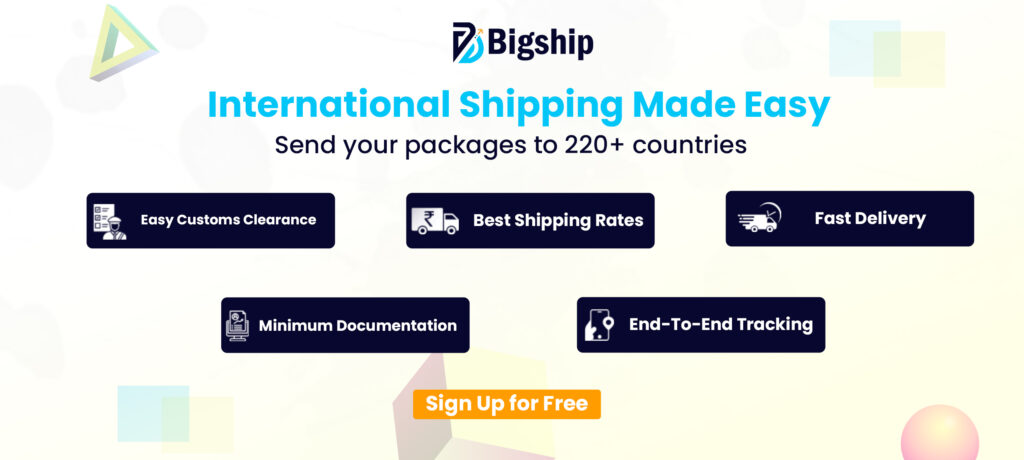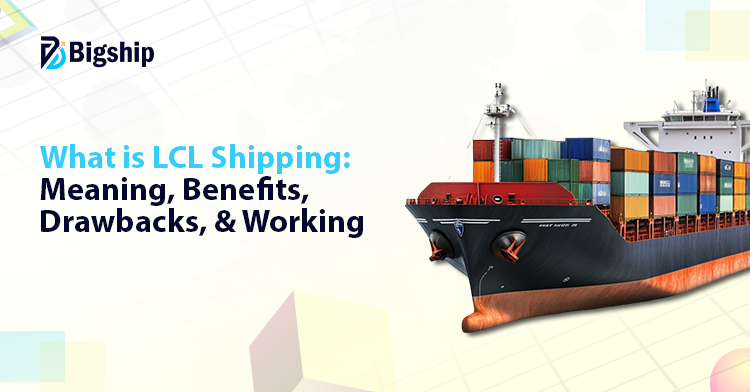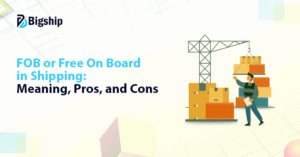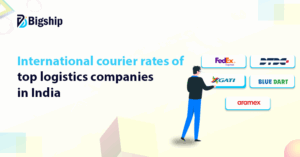In shipping, you don’t always need a full container to ship your goods. And that’s where LCL shipping comes in. This method of shipping lets you send smaller loads by sharing space with others in a container.

LCL shipment meaning is simple, it stands for Less than Container Load. You pay only for the space that is being used for shipping your goods.
Many small businesses use LCL shipping to save money and move goods without delay. It’s a common method in sea freight for lower-volume cargo. If you’re just starting or don’t ship in bulk, this can work well for you.
Let’s walk you through everything about LCL shipments and LCL shipping.
What is LCL shipment?
As already mentioned above, you don’t require a full container to shipments. If your cargo is small, LCL or Less Container Load is for you, in which you share container space with others.
LCL suits you when the shipment is not big. It works well for small businesses or first-time shippers. You pay only for the space your goods take. Your cargo travels with other shipments. This is why people also call it a groupage shipment. Everything is packed together inside one big container.
Benefits of LCL shipping
LCL shipping has several advantages, and the main ones are mentioned below.
- The biggest plus of LCL shipping is that you pay only for the space your cargo takes. That helps you control your shipping cost.
- In LCL shipping, you don’t need to wait to fill a full container. You can send goods in small volumes and pay a fair share.
- You also cut down on storage. LCL shipments are shipped in small batches, so you don’t need to keep a large stock in a warehouse.
- Air freight is fast but costly. LCL shipping is slower but much cheaper. If time is not a problem, this works great.
- During busy times or holidays, full containers or air slots are hard to find. But less than container load gives you better chances to book space.
Drawbacks of LCL shipping
With advantages, there come some disadvantages as well of LCL shipping. Let’s have a look at them as well.
- The delivery in LCL shipping takes longer. Your cargo waits while other shipments get packed and unpacked, and that adds time.
- The rate per cubic meter is higher in LCL shipping. If your goods grow in volume, full container shipping might cost less.
- Your cargo shares space with others. If one shipment has customs issues, your goods get stuck too.
- You also pay for packing and unpacking at container stations. On top of that, trucking charges apply from the warehouse to the port and back. These extra costs matter in less than container load shipping.
Documents You Need for LCL Shipping
When you book less than container load shipping, some paperwork is a must. The following documents help move your cargo smoothly and legally.
Bill of Lading: This is your shipping receipt. It proves that the goods are loaded and shows details like who is sending and who is receiving.
Commercial Invoice: This paper shows what you’re shipping, how much it costs, and who’s involved. It’s used for customs and payment.
Packing List: It lists what’s inside each box or package. It helps customs check the cargo and ensures the count is right.
Certificate of Origin: This proves where your goods come from. Some countries ask for it to apply correct taxes or duties.
Insurance Certificate: This proves your cargo is insured. It protects your goods in case of damage or loss during the LCL shipping journey.
Dangerous Cargo Certificate: If your cargo is risky or flammable, this document is needed. It shows that the goods are declared and safe to transport.
How is LCL shipping priced?
LCL shipping cost depends on the space your cargo takes. The space is measured in cubic meters (cbm). Weight matters less because sea vessels carry huge loads.
You must book at least 1 cubic meter. Even if your cargo is smaller, you still pay for that minimum space. The more space you use, the more you pay. But the cost doesn’t rise evenly. Sometimes, a small jump in volume can cause a big rise in price.
For example, if your package is just 10cm x 10cm x 10cm, you still pay for 1 full cbm. On the other hand, moving from 5 to 8 cbm could raise your cost much more than expected.
LCL Shipment – How Does It Work?
The process of an LCL shipment is simple. It follows a few clear steps from start to finish. Here’s how it goes:
Contact the Shipping Company: You begin by reaching out to a shipping provider and share what you want to send and where it needs to go.
Share Cargo Details: You give the size and type of your goods. Based on this, the company plans the route and cost. They group your cargo with others that fit in the same container.
Packing and Shipping: Your goods go to the warehouse. From there, they’re packed with other shipments inside one container, and this step is often called container stuffing.
Unloading and Delivery: When the ship arrives, the container is unloaded. Each shipment is separated and sent to the final address.
FCL vs LCL shipping
Here’s a quick FCL vs LCL shipping comparison to help you decide what fits best for your shipping needs.
| LCL Shipping | FCL Shipping |
| The cost per CBM for LCL shipments is higher since cargo is grouped and separated. | On the other hand, the cost per CBM in FCL is lower as you book the entire container. |
| The rates of LCL shipment often stay fixed for up to 3 months. | In the case of FCL, rates usually change every 2 weeks. |
| The delivery time takes longer due to extra handling and grouping. | In FCL shipping, the delivery time is faster as the container moves directly to the receiver. |
| LCL is good for smaller loads and avoids stock buildup. | FCL suits for bulk shipping as it may overload your storage or supply chain. |
How to pack and label goods for LCL shipping?
Packing your cargo the right way is important in less than container load shipping. It keeps your goods safe and helps avoid mix-ups during the journey. The proper process to do so is mentioned below:
Use strong boxes and wrap well: Place your goods in sturdy boxes. Wrap each item using bubble sheets or padding. Seal every box tightly to keep it safe from damage or moisture.
Put clear labels on each box: Write key details on every box. This includes your name, receiver’s name, destination, booking number, and freight forwarder info. Labels should be easy to read.
Add box numbers: Number every box based on the total. If you’re sending 10, mark them as Box 1 of 10, Box 2 of 10, and so on.
Mark fragile items clearly: If your goods can break easily, mark every side of the box with the word “Fragile”. This tells handlers to be careful while moving it.
Simple tips to get better LCL shipping rates
Here are a few tips to get proper rates for LCL shipping.
Compare prices from different freight partners: Do not settle for the first quote you get. Ask at least three or four companies. This gives you a fair idea of market rates and helps you spot any quote that seems too high or too low.
Check pallet size and not just box size: Your supplier may share only box sizes. But boxes are placed on pallets, and pallets take up space. You’ll be charged for that too. So always ask for full dimensions, including pallets.
Fragile goods may cost more: Items like TVs or glass products can’t be stacked. They need extra space in the container. So, your rate may be higher. Plan for that while getting your quote.
Know the inside size of the container: A 20-foot container isn’t fully 20 feet on the inside. Always check the actual space available. This helps you see how much of the container your cargo will use and if LCL shipping is right for your load.
How to do LCL shipping with Bigship?
Shipping less than container load cargo is easy with Bigship. You just need to book your shipment online, and Bigship takes care of the rest. It works with over 30 trusted carrier partners, giving you multiple options to choose from. You get low shipping rates, quick service, and on-time delivery to your destination.
Bigship also helps with customs clearance at the port, making the process smooth for you. Whether you’re a small business or sending goods for the first time, Bigship makes LCL shipping simple, reliable, and affordable.
Key Takeaways
- LCL shipment means sending goods that don’t fill a full container, by sharing space with other shippers.
- In LCL shipping, you pay only for the space your cargo uses, starting from 1 cubic meter.
- LCL shipping takes more time due to extra handling and shared cargo.
- Proper packing, labeling, and numbering are important in LCL shipping.
- LCL costs more per CBM than FCL, but suits smaller loads.
- Getting quotes from multiple freight forwarders helps find the best rates.
Conclusion
LCL shipping is a smart choice when you don’t have enough cargo to fill a full container. It helps you save money and move goods in smaller loads. But it needs careful planning, proper packing, and the right service partner.
Bigship makes LCL shipping easy for you. It offers low rates, works with 30+ carriers, and supports you through every step. From booking to customs clearance, Bigship ensures your cargo arrives on time at its destination without any trouble.
So, sign up with Bigship and start moving your LCL shipments.
FAQs
What is LCL meaning in shipping?
LCL stands for Less than Container Load. It means your cargo shares space in a container with goods from other shippers.
Is LCL shipping cheaper than FCL?
LCL has higher per CBM rates, but it’s more affordable for small shipments since you don’t pay for unused space.
Is customs clearance included in LCL shipping?
Yes, if you choose the right service provider like Bigship, customs clearance is handled as part of the process.





